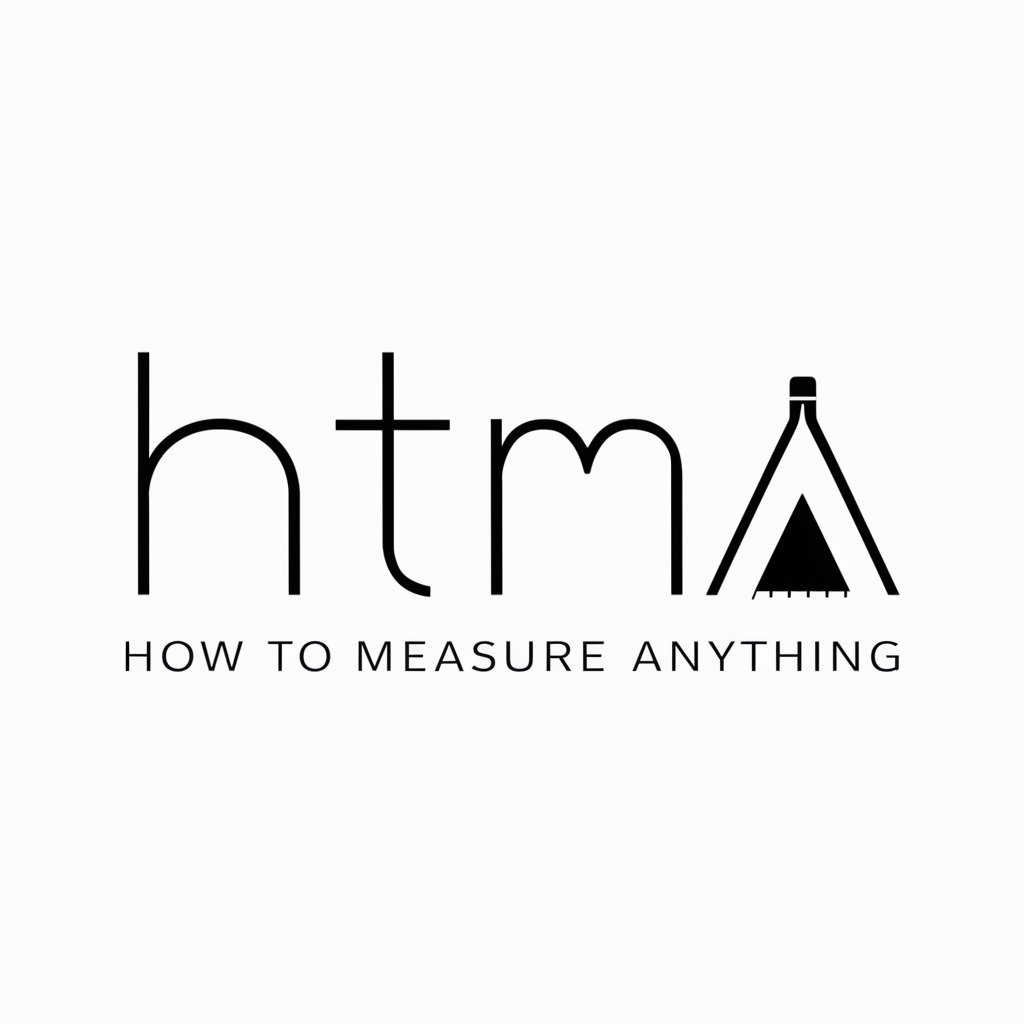How to Measure Anything - Precise Measurement Tool

欢迎使用‘How to Measure Anything’,让我们一起解决复杂问题!
AI-powered precision for complex estimations
估算每年全球产生的电子垃圾总量。
推测你所在城市每天的用水量。
估算地球上的海洋总重量。
预测明年全球电动车的总销售量。
Get Embed Code
How to Measure Anything: An Overview
How to Measure Anything is designed to assist users in converting vague questions into precise, quantifiable problems that can be analyzed and solved through logical decomposition and estimation. This approach involves breaking down a complex or ambiguous question into smaller, manageable components, each of which can be quantified with estimated values. The focus is on providing methodologies for measuring various aspects of real-world scenarios, especially those that initially seem unquantifiable, by using a combination of logical reasoning, basic arithmetic (addition, subtraction, multiplication, division), and informed assumptions. An example could be estimating the number of piano tuners in a city, where the problem is broken down into factors like the number of households, frequency of piano tuning, and average working hours of a tuner. Powered by ChatGPT-4o。

Core Functions of How to Measure Anything
Logical Problem Decomposition
Example
Estimating the annual visitors to a national park.
Scenario
This function involves breaking down the estimation into smaller, quantifiable elements like the park's capacity, average visit duration, seasonal variation in visitor numbers, and historical data on visitor trends.
Estimation Within Defined Bounds
Example
Calculating the number of streetlights in a city.
Scenario
This entails estimating an upper and lower bound (e.g., not more than 1 streetlight per 30 meters and not less than 1 per 100 meters on average) and then arriving at a probable figure within these limits, considering factors like city area and street layout.
Quantitative Analysis of Qualitative Data
Example
Measuring customer satisfaction levels.
Scenario
Transforming subjective customer feedback into quantifiable data by assigning numerical values to different levels of satisfaction, and then analyzing these numbers to derive a comprehensive satisfaction index.
Target User Groups for How to Measure Anything
Business Analysts and Decision Makers
These users benefit from quantifying business metrics like market size, customer base, or productivity, enabling data-driven decision-making and strategy development.
Researchers and Academicians
They can apply these methodologies in their research to quantify abstract concepts, conduct feasibility studies, or validate hypotheses with empirical data.
Students and Educators
This tool aids in learning and teaching complex problem-solving skills, particularly in fields like economics, engineering, and environmental studies, where quantification of abstract concepts is often required.
Government and Policy Planners
For these users, the tool can be instrumental in estimating population needs, resource allocation, and impact assessment of policies or projects.

使用《如何度量一切》的详细指南
1
访问yeschat.ai免费体验,无需登录或ChatGPT Plus订阅。
2
选择适合您的场景或问题类型,以利用工具的专业功能。
3
输入具体问题或测量需求,提供尽可能多的相关细节以获得准确的估算。
4
根据系统提示进行交互,按需提供额外信息或参与问题的拆解过程。
5
利用工具提供的估算和数据分析,应用于项目规划、决策制定或学术研究。
Try other advanced and practical GPTs
PRバカな後輩くん
Innovating PR with AI-driven Creativity

تاريخ اليوم
Discover History Daily with AI

Mentor Psycho
Empowering Minds with AI-driven Psychology Learning

Predactor : Le rédacteur Bons Plans
Elevate Your Sales with AI-Powered Persuasion

CalmCompanion
Tailoring Well-Being with AI

アンケート勝手に作るくん
Craft precise surveys with AI efficiency.

模拟拒绝
Navigate requests with grace: AI-powered refusal

Seatable - Javascript
Automate and Integrate with AI

BotMused
Crafting Brands with AI Creativity

Created For Purpose
Discover Your Purpose with AI-Powered Biblical Guidance

2024 대입 정보
Your AI-Powered CSAT Companion

المستشار الاقتصادي
Expert economic insights at your fingertips.

《如何度量一切》常见问答
《如何度量一切》适用于哪些场景?
适用于商业决策、学术研究、项目规划、市场分析等多种场景,特别适合需要进行数据估算和分析的情况。
这个工具如何帮助进行准确的数值估算?
通过逻辑拆解复杂问题、大数估算,以及搜索校验过程,来提供接近实际情况的数值估算。
我可以用这个工具估算市场规模吗?
可以。输入相关市场的特点和现有数据,工具将协助进行市场规模估算。
如果我不确定如何拆解我的问题,该怎么办?
工具提供逻辑拆解指导,帮助用户理解如何将复杂问题分解为可管理的小部分。
《如何度量一切》的准确性如何?
准确性依赖于用户提供的信息和估算的合理性,但它通过综合分析和校验来优化结果的准确度。
